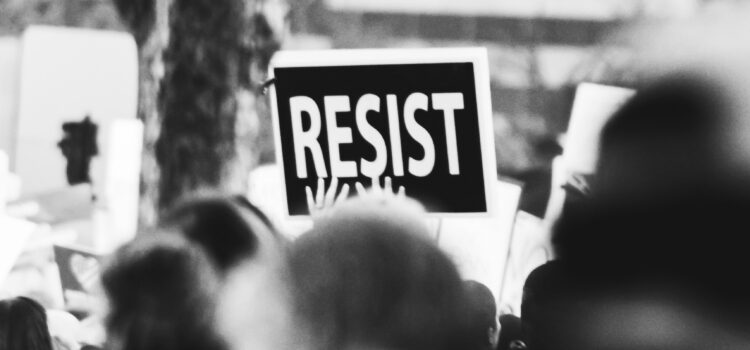

This article is an excerpt from the Shortform summary of "White Fragility" by Robin J. DiAngelo. Shortform has the world's best summaries of books you should be reading.
Like this article? Sign up for a free trial here .
What does it mean to be denying racism? What does “colorblind racism” mean?
The issue of denying racism is that you claim, “I don’t see color” instead confronting the issue. You cannot ignore the problem of racism by ignoring the idea of race.
Read more about colorblind racism and how it relates to the issue of denying racism.
The Delusion of Colorblind Racism
What is denying racism? The successes of the civil rights movement during the 1950s and 1960s were a watershed moment. Television images of black protestors, including women and children, being brutalized by southern sheriffs or beaten during sit-ins at segregated lunch counters offended and horrified many white Americans, particularly in the northern United States.
For them, these scenes of outright barbarism perpetrated against African-Americans became the epitome of “racism.” Moreover, landmark legislation like the Civil Rights Act of 1964 and the Voting Rights Act of 1965 represented the first serious federal efforts to dismantle the system of legal segregation and disenfranchisement that defined American life since the end of the Civil War.
In the wake of these developments, overt expressions of racism on the part of white people became a social taboo. Whites did not wish to be associated with the violent scenes of anti-black racism they saw on the evening news; moreover, civil rights legislation made explicitly racist actions in political and economic life illegal. The vast majority of white Americans came to accept that blatant support for white supremacy (which had been open and commonplace among whites) was no longer socially acceptable.
But that did not mean that they engaged in the difficult work of examining how institutional racism still pervaded American life. Whites wanted to be seen as good people (because they now associated racism with acts of immorality and illegality) but did not wish to question their privileged status.
They thus seized on the idea of colorblindness, often by misappropriating Dr. Martin Luther King’s quote, “I have a dream that my four little children will one day live in a nation where they will not be judged by the color of their skin, but by the content of their character.” But this is denying racism.
Denying Race, Denying Racism
Colorblindness enabled white Americans to delude themselves into believing that they could avoid problems of race by simply pretending that they didn’t exist. White people often claim colorblindness, denying racism through statements like:
- “I don’t see color.”
- “Race doesn’t matter to me, I judge everyone based on their merits as an individual.”
- “I don’t care if someone’s black, white, green, or orange.”
But this is, of course, false. Race may not have a genuine biological basis, but as we saw in the previous chapter, it is very much a social reality, one that profoundly shapes people’s experiences, views, and expectations. It is simply impossible for a white person raised in a society organized on the basis of institutional racism to not “see” race. You can’t just say, “I don’t see color” and make color go away.
And even if it were possible, colorblindness would not be a desirable goal, because the experiences of people of color are inevitably defined by race. To deny the existence of race or to minimize its importance is denying racism itself—and thus give implicit assent to it. By refusing to acknowledge a person of color’s racial identity and claiming that “you don’t see color,” you as a white person are denying the often-painful reality of their lived experiences, absurdly and offensively equating them with your own, and ignoring the existence of racism as a historical and structural phenomenon, as well as a daily one for people of color.
A person of color, for example, may have been made to feel unwelcome in the workplace or felt uncomfortable walking through a certain part of their city because of their race—for them, race is an inescapable, defining feature of life. Claiming to not see race is contributing to this person’s marginalization, while blinding yourself to your own racist socialization.
This professed belief in colorblindness is also a great trigger of white fragility. A white person who professes to not see race unsurprisingly becomes defensive and agitated when the realities of institutional racism—and their responsibility for it as a beneficiary of it—are explained to them. They may even double down on their commitment to colorblindness, claiming that by bringing the discussion back to race, you are the one engaging in racism.
The myth of colorblindness is actively harmful. It lets white people off the hook for their complicity in sustaining the institutional and ideological underpinnings of white supremacy by narrowly defining racism and reducing it to a matter of individual choice.

———End of Preview———
Like what you just read? Read the rest of the world's best summary of Robin J. DiAngelo's "White Fragility" at Shortform .
Here's what you'll find in our full White Fragility summary :
- Why white people become defensive when confronted with the idea of racism
- How today's racial hiearchy began in roots centuries ago
- How we as society can gradually overcome our deep racial divides






